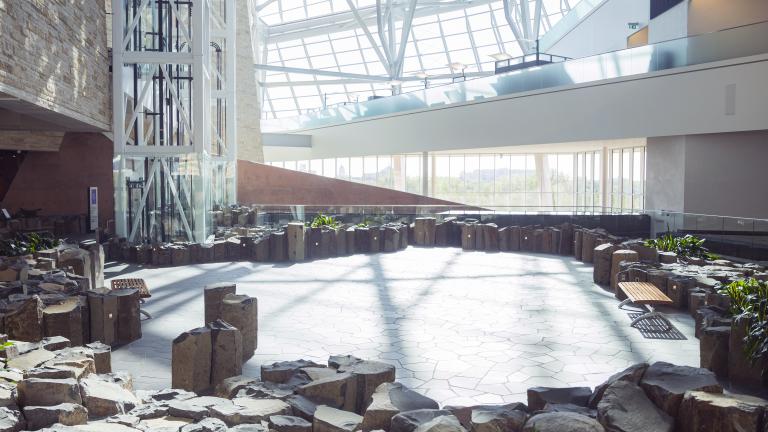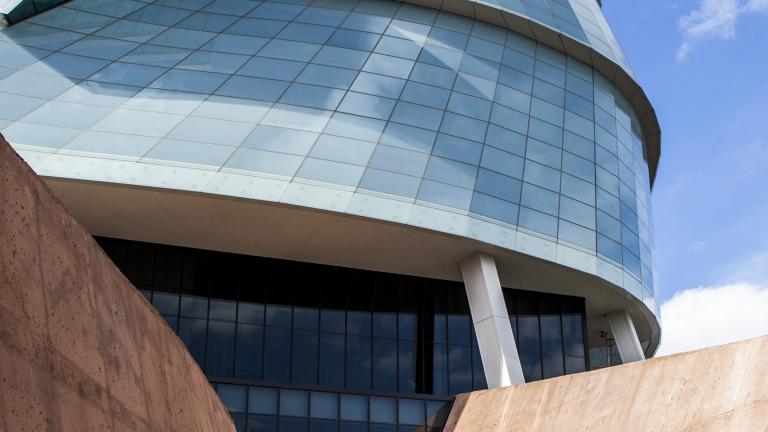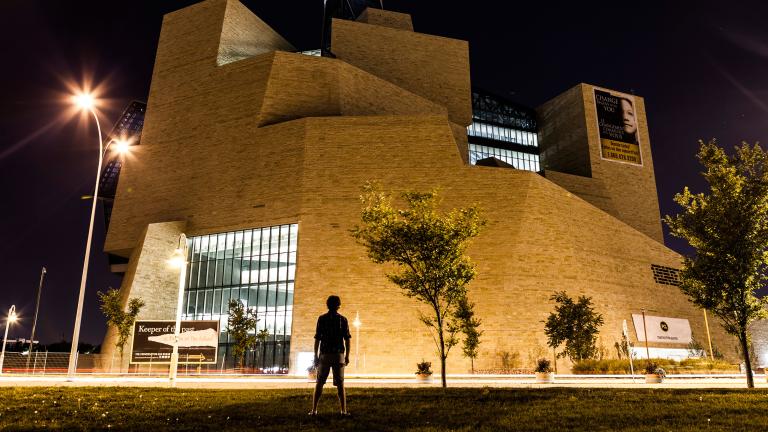Architecture
A journey from darkness to light
The Museum’s architecture is an important part of the visitor experience. Architect Antoine Predock embedded human rights symbolism everywhere, weaving a tapestry of shadow and sunshine with glass, rock and steel.
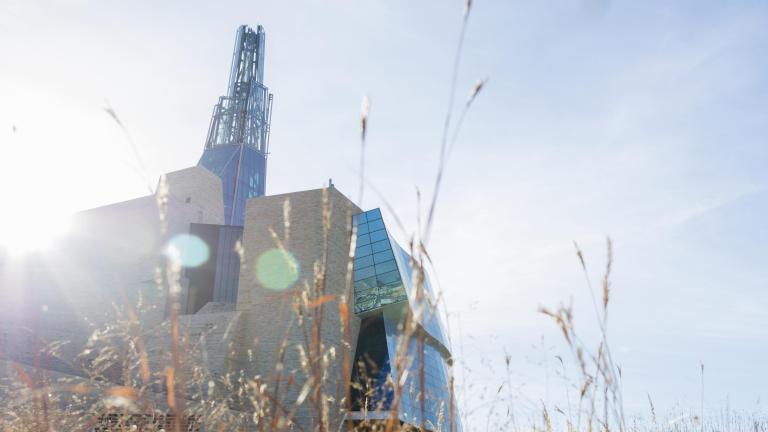
Photo: CMHR, Aaron Cohen
Perched on the Prairie landscape at the forks of two rivers, the Museum rises from four stone “roots” that symbolize humanity’s connection to Mother Earth. The structure embodies aspects of the Canadian landscape: a craggy limestone mountain is surrounded by a glass cloud and topped with an icy peak. But look again, and the cloud becomes the wings of a dove embracing the building beneath a glowing beacon of hope. The structure’s multiple faces and changing moods also symbolize the value of diverse points of view. Once inside, visitors progress upwards from darkness to light – reflecting our hopes for human rights education.
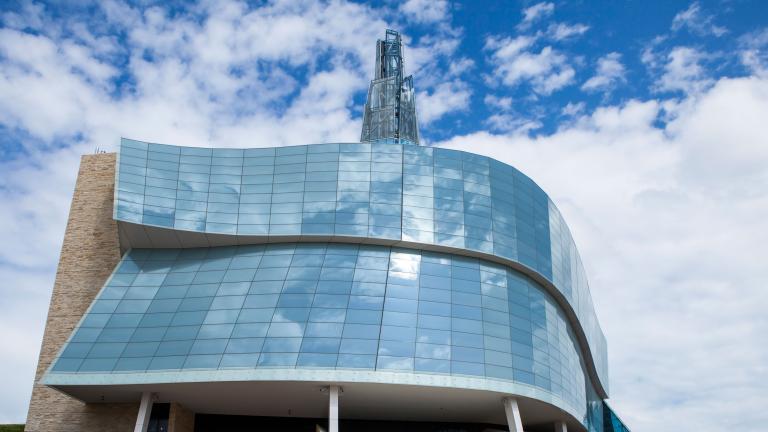
An ancient meeting place
The site, on First Nations Treaty One territory and the heartland of the Métis people, has been a meeting place for thousands of years. Before construction, an archaeological excavation recovered more than 400,000 artifacts. Indigenous Elders participated in discussions about the dig and the treatment of sacred items. Traditional medicine bags were deposited in more than 500 holes drilled for piles that support the building.
Amazing design highlights
- Alabaster ramps carry visitors between galleries. Glowing with LED lights, they criss‐cross upwards for 800 metres between chalkboard black concrete walls – a literal path of light through the darkness.
- Basalt rock columns and hand‐cut tiles frame pools of water and plants in the interior Stuart Clark Garden of Contemplation, a feature inspired by the Giant’s Causeway of Northern Ireland.
- A tower rises 100 metres above the ground like an icy mountain cap that glows as a beacon to all. A viewing platform inside the Israel Asper Tower of Hope provides a breathtaking panorama of the City of Winnipeg and the Prairie vista beyond.
- The ground floor has been tinted red and textured with cracks to simulate walking on the dried clay mud of the Red River’s banks.
- A glass “cloud” covers the southwest aspect of the museum, made of more than 1,300 panes of glass that resemble the folded wings of a dove.
- Four massive “roots” are clad in 400‐million‐year‐old limestone, gripping the red clay soil of the riverbank.
- A limestone “mountain” is formed on the northern aspect of the building, which houses the galleries in strength and protection.
Meet the architect: Antoine Predock
One of Canada’s largest‐ever juried architectural competitions was launched in 2003 by Friends of the CMHR. Entries came from 63 firms in 21 countries. The submission by distinguished architect Antoine Predock of Albuquerque, New Mexico was ultimately chosen. His masterful design is evocative of numerous natural elements. Predock described the building as “carved into the earth and dissolving into the sky.”
Known for his skill in interpreting regional identity through buildings, Predock created forms that are appropriate to landscapes and to human experience. His designs show how human beings can interact spiritually with a building, technology, the natural environment, and each other.
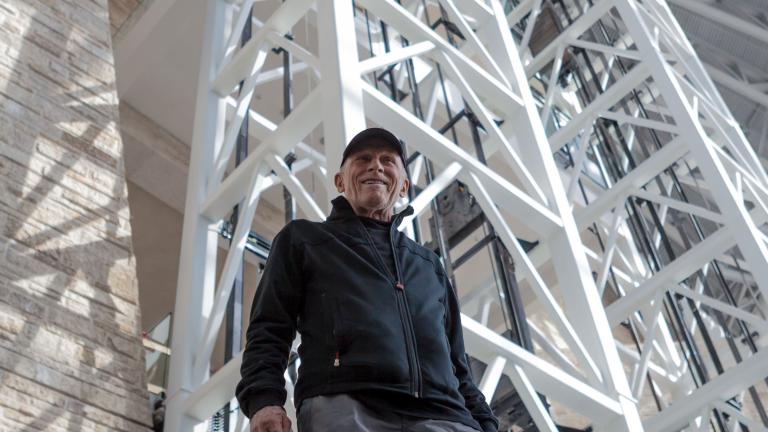
“I think of my buildings as processional events, as choreographic events; they are an accumulation of vantage points both perceptual and experiential.”
An International Fellow of the Royal Institute of British Architects, a National Academy Academician, a Senior Fellow of the Design Futures Council and an Honorary Fellow of the Royal Architectural Institute of Canada, Predock’s honours include the American Institute of Architects’ Gold Medal, the Smithsonian Cooper‐Hewitt Lifetime Achievement Award and the prestigious Rome Prize.
Antoine Predock died on March 3, 2024 in Albuquerque. The CMHR is grateful for his remarkable vision in designing a building that will speak to the ongoing story of human rights and hope for generations to come.
Green and inclusive
The Museum is a high‐performance “green” building surrounded by the largest urban tract of revegetated natural landscape in Western Canada. Its inclusive design has set a new global benchmark for accessibility, ensuring a rich experience for visitors of all abilities.
Read more about the building.
By the numbers
A few figures from this epic architectural achievement and construction project:
- 24,155 square metres (260,000 square feet) of total building area
- 4,366 square metres (47,000 square feet) of exhibit space
- 378 piles and 136 concrete caissons support the building
- 18,000 square metres (193,750 square feet) of limestone in the roots
- 5,400 tonnes of steel in the framework of the cloud
- 773 metres (2,536 feet) of white alabaster‐clad ramps
- 3,200 square metres (34,445 square feet) of alabaster plates on the ramps
- 1,669 pieces of glass (1,335 in the cloud, 334 in the tower)
- 35,000 tonnes of concrete
- 600 tonnes of basalt in the Stuart Clark Garden of Contemplation
- 100‐metre (328‐foot) high Israel Asper Tower of Hope, taller than Manitoba’s Golden Boy and Ottawa’s Peace Tower
- 14 national and international awards related to its architecture and construction
- The capital project cost $351 million, with $150 million raised through a national capital campaign by Friends of the CMHR.
Our Mandate
Our role is to encourage thought and conversation about human rights globally, with a special focus on Canada.
Building the Museum
While most visitors come for the stories inside our walls, the design and construction of our building is in itself a story, full of interesting facts and features.

